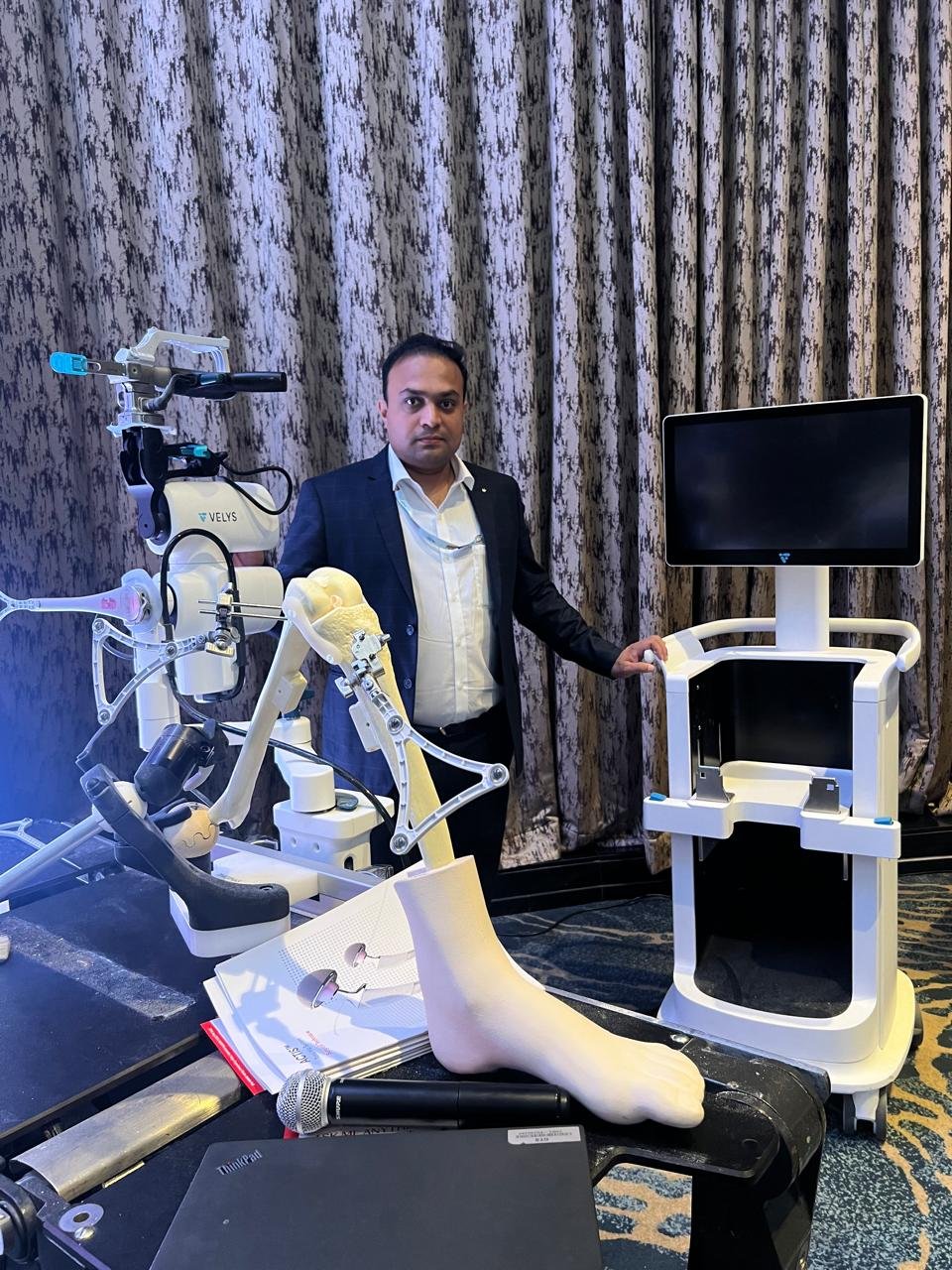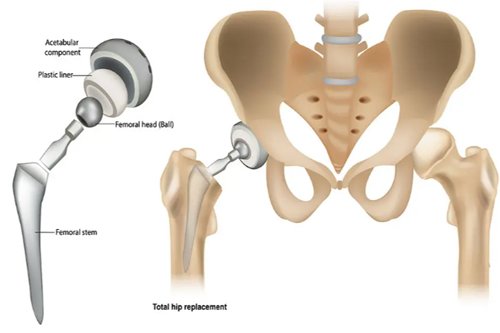Meet Our Doctor

Dr. Prajaktam M. Lende
ORTHOPAEDIC & JOINT REPLACEMENT SURGEON
Fellowships
- Navigation Based Joint Replacement Surgery (Hip & Knee Arthroplasty)
- Arthroscopy & Sport Medicine
- Ilizarove Surgery
- Observer Ship in Pediatric Orthopaedic Surgery (Wadia Hospital, Mumbai)
Hip replacement In Yavatmal
Home / Hip replacement In Yavatmal

Hip replacement In Yavatmal, also known as total hip arthroplasty, is a surgical procedure in which a damage or disease hip joint is replace with an artificial joint, call a prosthesis.
The hip joint consists of a ball (femoral head) at the top of the thigh bone (femur), which fits into a socket (acetabulum) in the pelvic bone. Conditions such as osteoarthritis, rheumatoid arthritis, avascular necrosis, or severe hip fractures can lead to significant pain and limit mobility, often necessitating a total hip replacement.
The surgical process involves removing the damage femoral head and replacing it with a metal or ceramic ball mount on a stem, which is insert into the femur.
Treatment and Recovery Process for Total Hip Replacement
Total hip replacement, also known as hip arthroplasty, is a surgical procedure commonly perform to relieve pain and restore function in individuals with severe hip joint damage, often cause by osteoarthritis or other degenerative conditions. The procedure involves replacing the damage hip joint with an artificial joint, typically made of metal and plastic components. Here is an overview of the treatment and recovery process for total hip replacement:
Surgical Procedure:
- Anesthesia:
- Total hip replacement is usually perform under general anesthesia, although regional anesthesia options may be consider.
- Incision:
- An incision is made to access the hip joint. The size and location of the incision may vary.
- Hip Joint Resurfacing:
- Damage cartilage and bone are remove from the hip socket and femoral head.
- Implant Placement:
- The artificial hip components (acetabular cup, femoral stem, and sometimes a femoral head) are securely implant.
- Closure:
- The incision is close, and the surgical site is dress.
Postoperative Care:
- Hospital Stay:
- Most patients stay in the hospital for a few days, but this can vary.
- Thus,Physical therapy begins shortly after surgery to aid in mobility and prevent complications.
- Pain Management:
- Therefore, Medications are prescribe to manage postoperative pain.
- Prevention of Blood Clots:
- Blood thinners and compression stockings may be use to reduce the risk of blood clots.
- Early Ambulation:
- Patients are encourage to begin walking with the help of crutches or a walker soon after surgery.
Rehabilitation and Recovery:
- Physical Therapy:
- Firstly,A structure physical therapy program helps improve joint flexibility, strength, and overall function.
- Once,Rehabilitation may continue on an outpatient basis.
- Activity Modification:
- Thus,Patients are advise on movement restrictions and gradual return to daily activities.
Long-Term Considerations:
- Lifestyle Changes:
- Firstly,Patients may need to make adjustments to their lifestyle and activities to protect the artificial joint.
- Routine Check-ups:
- once, Periodic follow-up visits with the orthopedic surgeon to assess the condition of the hip replacement.
- Complications Monitoring:
- Thus, While complications are rare, it’s important to monitor for signs of infection, implant loosening, or other issues.
Hip replacement Advantages
Most people who have hip replacements notice an improvement in their overall quality of life and mobility.
Freedom from pain is often the main benefit of the surgery. Initially, you should expect some post-surgical pain, but you’ll be given medication to manage it. Pain from the surgery itself should begin to ease within the first two weeks. However, some people may experience longer-term pain, which may require further treatment.
You can also expect some improvement in mobility, though a hip replacement may not provide the same range of motion as a healthy natural hip joint. Movement may become easier primarily due to the reduction in pain. You are likely to see greater improvement if you actively participate in your recovery, such as regularly doing recommended exercises.
Some people find that one leg feels longer than the other after the operation. This sensation may arise because you have adapted your walking style to ease the load on your painful hip. In such cases, physiotherapy can help. If there is an actual difference in leg length, it might need to be corrected with a shoe insert or insole.
As with any major operation, there are risks involved in the surgery itself. These risks will be discussed in more detail later, and your surgeon will also explain them to you before you decide to proceed with the surgery.
Best AVN treatment In Yavatmal
Dr. Prajaktam Lende is a trusted Orthopedic doctor In Yavatmal. Top joint Replacement surgery Doctor in Yavatmal. Book an Appointment with Dr Prajaktam M. Lende, one of the prominent orthopaedic surgeon specialised in Joint Replacement surgery and ligament Reconstruction surgery Dr Prajaktam M. Lende at Yavatmal.He is currently associated with the Orthopedic & Joint …
